Dramatic mountain ranges and broad, arid sage steppes define the Cowboy State’s wide-open spaces. Primarily, a Wyoming fishing experience will center around cold-water species. Rainbow, Brook, and Brown Trout have been stocked in the various watersheds, and many are now self-sustaining, wild populations. Four separate species of native Cutthroat Trout are also found in the western parts of the state.

The fisheries here are truly breathtaking, while the scenery and true Western culture are added bonuses. But the biggest reason to come is for the beauty and design of the fish. Their otherworldly colors, sleek shapes, and incredible leaps are the reasons you should come, even if all you want to do is snap a photo and slip them back into the water! Let’s take a look at some of the best places to target these creatures…
Hunt Casper’s Huge Resident Rainbows
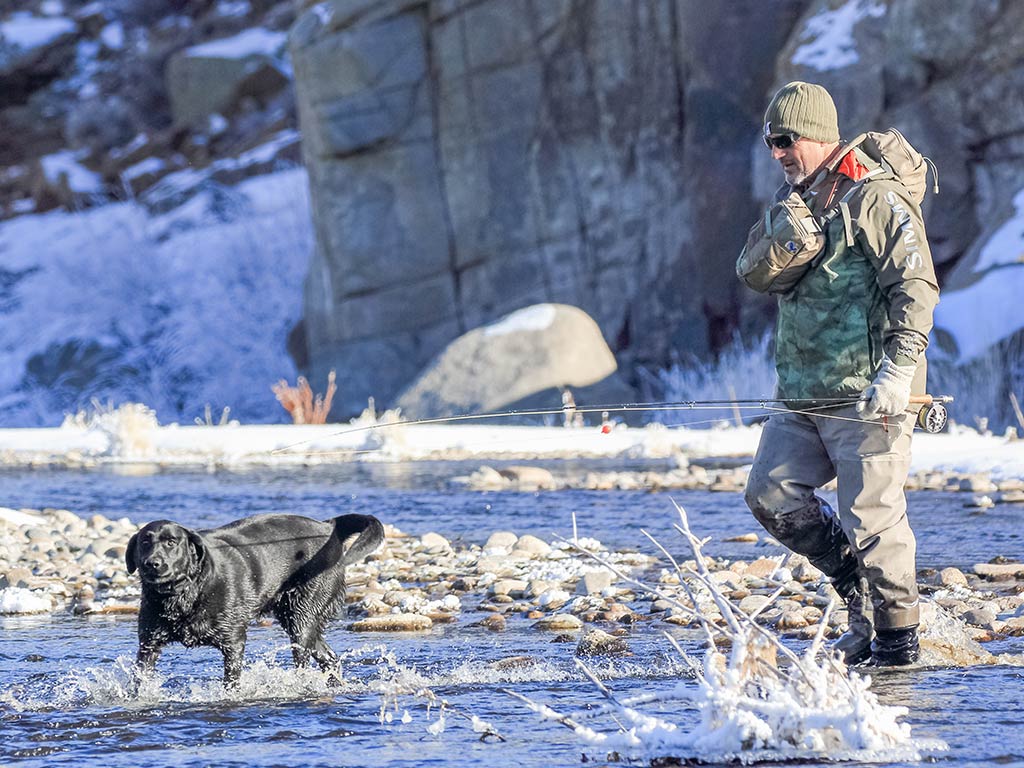
Probably one of the worst-kept secrets in fly fishing is the astonishing success of the Platte River Revival. The city of Casper, partnering with local nonprofits such as the Two-Fly Foundation, has completely reshaped and rehabilitated the North Platte River by emphasizing critical Trout habitats. Indeed, the city’s economic future is tied to the restoration of the river which runs straight through downtown!
In the 1950s, this section of the Platte was described as one of the dirtiest rivers in America. But little by little, local groups, the city, and state agencies have cleaned it up and invested in bank restoration and other conservation practices that improved the entire riparian vibe. The result has been a resurgence in Trout populations.
The clean-up has affected the whole community. There are bike paths, running trails, and a whitewater area for kayaking. Full-service fishing lodges have made Casper their home. The scene has changed so much that, if you haven’t been to the Casper in a while, you might not recognize the new version. While craft breweries and music venues have sprung up overnight, fly-fishing culture has also caught on in a big way.
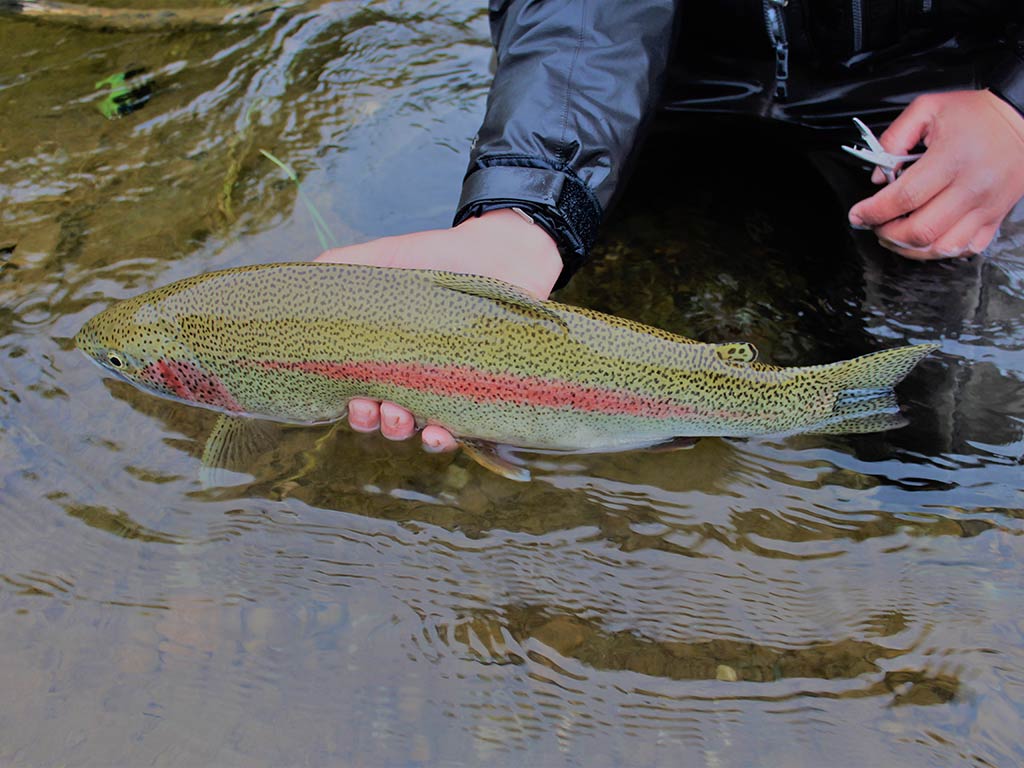
There are several professional fly shops where you can book a full-day drift. The Ugly Bug and Platte River fly shops are two popular names. They sell everything from flies to waders, and they’ll give advice for free!
Springtime is the best window to experience Wyoming’s fishery, as March kicks off the fly-fishing season. Every morning, it’s not uncommon to see several trailered drift boats heading out to the famous Grey Reef section. The preferred method for catching wild Trout is by dead-drifting weighted nymphs under an indicator.
In the fall, anglers come to throw streamers. In October, the crowds thin, but there are still solitary anglers wading in the deepest runs. There are rumors of Brown Trout that top 24 inches, making fishermen stick with it even as the temperatures drop. The swing and the grab are what they’re after, and on the North Platte, anything is possible.
Soak in Saratoga
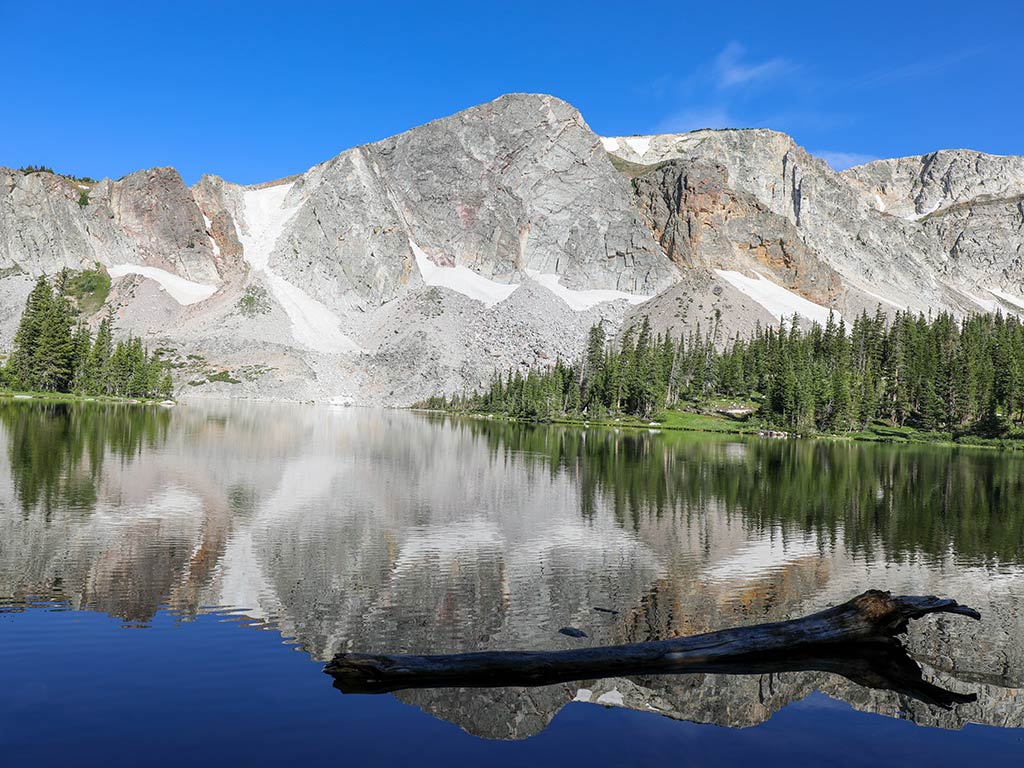
With a population of just 1,700, Saratoga is a charming, riverine town tucked between the Snowy Range and Sierra Madres. History abounds with stories of natives, fur trappers, and Western expansion. And DIY fishermen who use Saratoga as a base camp have unlimited options…
Saratoga Lake offers Rainbow, Brown, Brook, and Tiger Trout – a hybrid of Brown and Brook varieties. This 300-acre lake provides over 4 miles of shoreline for families to cast to rising fish, and spinners and bait are allowed.
If lake fishing isn’t for you, you can drive south and access the freestone section of the North Platte at several well-signed places. This is a wild, un-dammed section of the river where the terrain is often steep and the banks are lined with hundred-year-old cottonwoods.
Nearby, the Encampment River, a truly wild tributary, can be fished by following the obvious streamside trail. Wild, butter-hued Brown Trout are the prize, and it seems that the further upstream you explore, the better your chances are at catching an elusive German Brown. Stoneflies and caddisfly patterns work well, espeically in summer.
The Snowy Range, just an hour’s drive from Saratoga, is dotted with lakes that teem with Brook Trout. I suggest you try Lower Brooklyn Lake in July. It’s a perfect place to introduce children to fishing, and you can camp at one of the 19 campsites and even cook your catch at night under the stars. Every stream that laces the flanks of the Snowy Range holds Brook Trout. Find a beaver lodge and you’ll find honey holes to hit your generous daily limit of 16 fish per angler.
You’ll be whipped if you spend a few days hitting all of these spots. Luckily, Saratoga boasts many restaurants and saloons. You should drop into the Wolf Hotel and have a drink in the original 1893 saloon. But no one should leave town without soaking for a few hours at the Hobo Pool! This natural hot spring is free to the public 24 hours a day, 365 days a year. Soaking under the stars in Saratoga after a long day of experiencing fishing in Wyoming’s mountain streams is an incredible way to cement a lasting memory. And, if you happen to bump into one of the locals, they’ll happily tell you all about the local history.
Dubois’s Gravel Roads: Just Pick a Direction
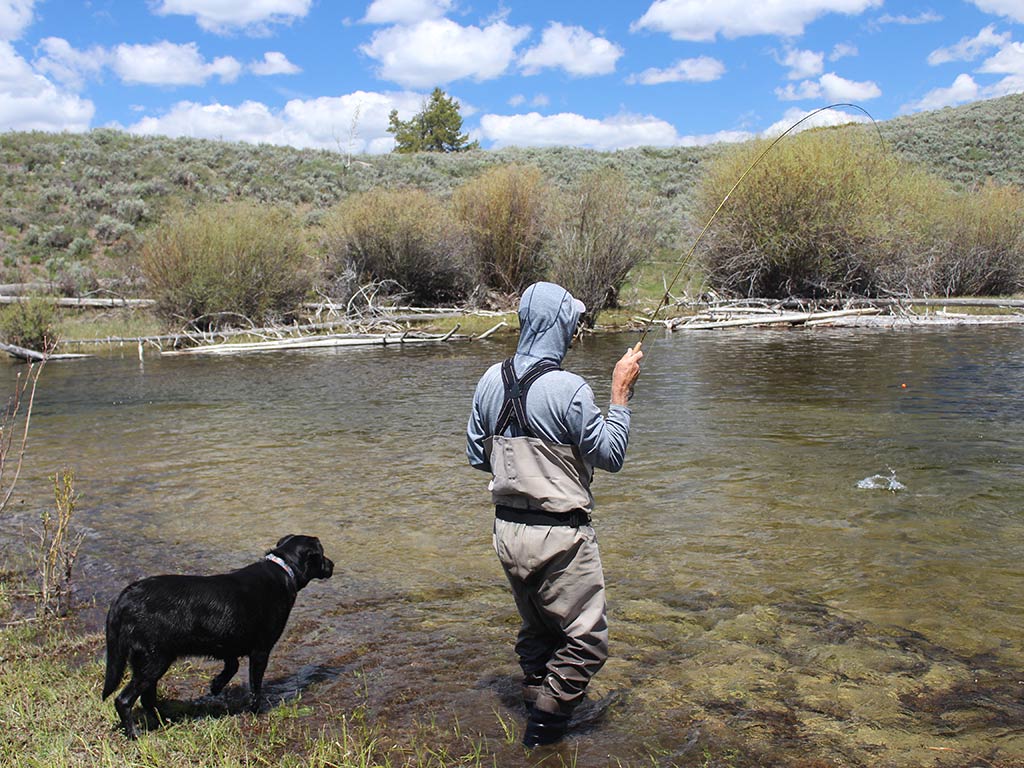
Upon arriving at this unique mountain town, you’ll notice that Dubois has no fast-food restaurants, no chains, and no familiar outlets you see in the rest of America. The town seems pinned to the side of the Absaroka Mountains! Horse ranches and cattle kingdoms, a wooden boardwalk, a few fly shops, and a cafe that has been there longer than anyone can remember… That’s Dubois.
Though it’s just 55 miles to Moran Junction, the entrance to Grand Teton and Yellowstone National Parks, Dubois has none of that frenetic energy. In fact, Dubois is laid-back, unconcerned, and comfortable in its countenance.
As you may expect, the fishing options here are unlimited. Gravel roads spray out of the town in many directions, all of them leading to small streams that teem with Brook Trout and the occasional Cutthroat. This area is especially great for dry fly enthusiasts who like to cast to rising pods of wild fish. But if you’re heading out for the first time, hit up the Cutthroat Fly Shop. Book a day or two with them, then go out and test what you’ve learned on your own!
Just beware that Dubois is grizzly bear country. It’s a good idea to carry bear spray and be extra aware when fishing in the area. You have to remember that you are entering the Yellowstone Ecosystem.
Score a Cutt-Slam with Joey
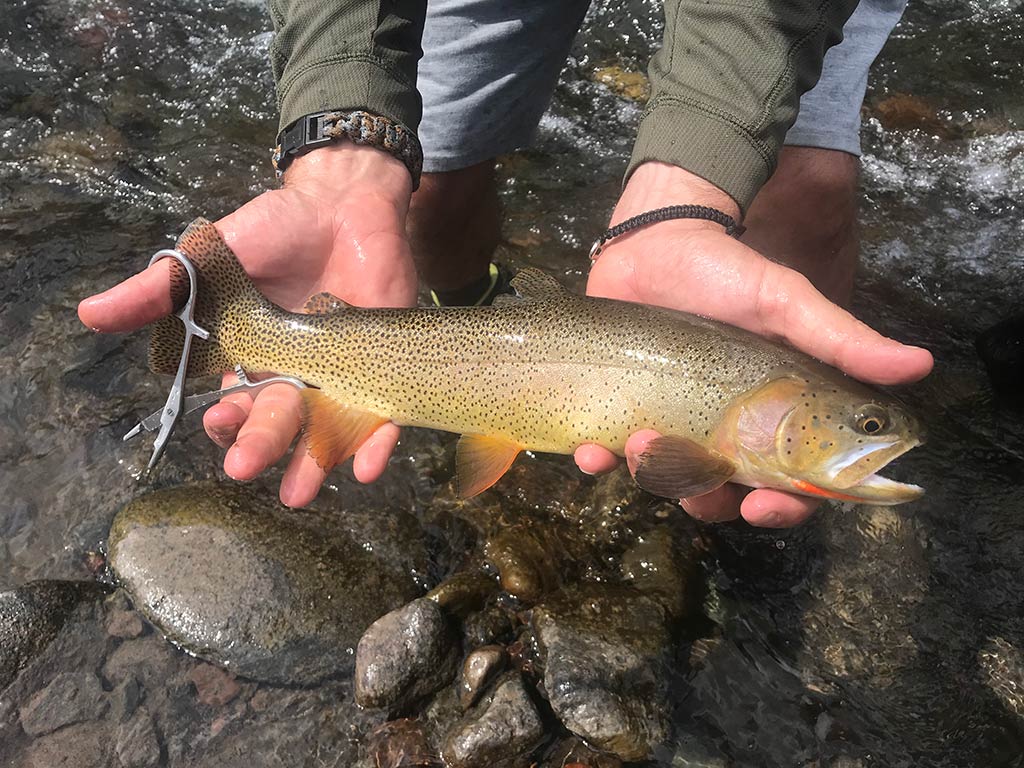
Wyoming is blessed with four subspecies of native Cutthroat Trout – the Bonneville, Colorado, Snake, and Yellowstone River varieties. These are native fish that existed here in the heyday of the Black Feet and the Shoshone, and each is beautiful in its own way. And, for anglers visiting, they want to catch all four to land a “Cutt-Slam.” In effect, this is the quintessential Wyoming fishing experience!
Joey Puettman, founder and president of the Sheridan Fly Rod Co., has guided over 100 anglers to successful Cutt-Slams here. When he’s not teaching rod-building, he’s out on a stream pursuing native Trout. Few people know more about these fish, their habitat, and the best times and places to catch them.
You’ll find the best Cutthroat streams in the extreme western part of the state, and you’ll be putting in serious miles and drinking gas station coffee if you want to complete the Slam. Get ready to sleep in tents beside tumbling freestone streams and prepare to bushwhack through willows. But, at the end of it, you may be eligible to apply for the Cutt-Slam certificate! Not only is this document frame-worthy, but it will look so good on your wall that you may want to hang it in your office for bragging rights.
The best months to attempt the Cutt-Slam are July and August when these fish are looking up. Bring your best dry flies, as this is the preferred method to induce a strike.
Explore the Productive Laramie Plains Lakes
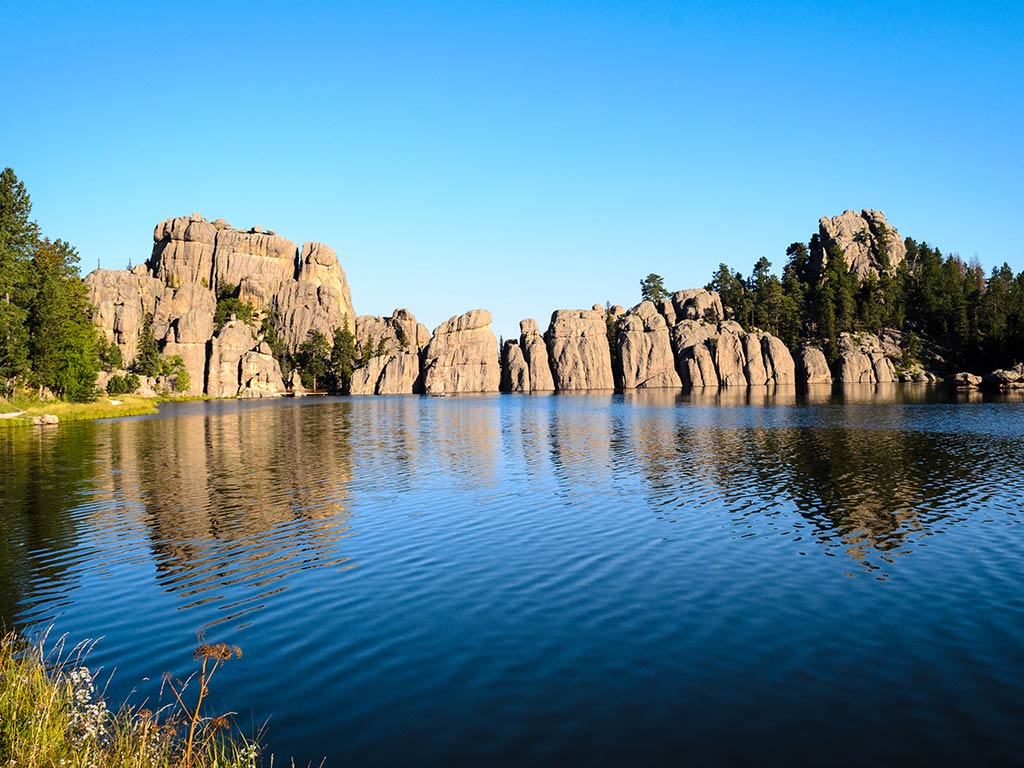
The handful of extremely productive high plains lakes outside of Laramie are bug factories where the Trout grow to monstrous proportions. They feed on freshwater shrimp, caddisflies, and damselfly larvae that hatch here, making it a fly fishing haven.
Just 15 miles west of town, these natural lakes are very fertile and offer miles of shorelines to explore. I cut my teeth fishing these lakes when Laramie was a wind-swept college town with windowless drinking establishments, warped billiard tables, and an underachieving football program. Then Josh Allen showed up!
Today, Laramie sports a makeover. New restaurants and breweries abound, while the quaint downtown district boasts bookstores, bakeries, and boutiques. It’s still a fishing town, at heart, though, and the classic, old-school West Laramie Flystore still offers traveling anglers some worthy advice on how to fish these unique lakes. Whether you’re looking to explore Meebore, Alsop, Twin Buttes, Galett, or Hattie, the Flystore offers guided trips for the uninitiated.
Shore anglers, belly-boaters, worm-chuckers, and boat skippers are all present here from when the ice comes off in mid-March until it builds again in December. You’ll want to be equipped for sudden shifts in weather, though, as these lakes sit at an elevation of nearly 8,000 feet. Ice fishing is big here in winter, too. Professionals at the West Laramie Flyshop can tell you when it’s safe to venture onto the hardwater and try for fish through the ice. Whichever time of year you visit, make sure to keep a fish or two for the grill!
Experience Wyoming’s Fishing Scene Like a Local!
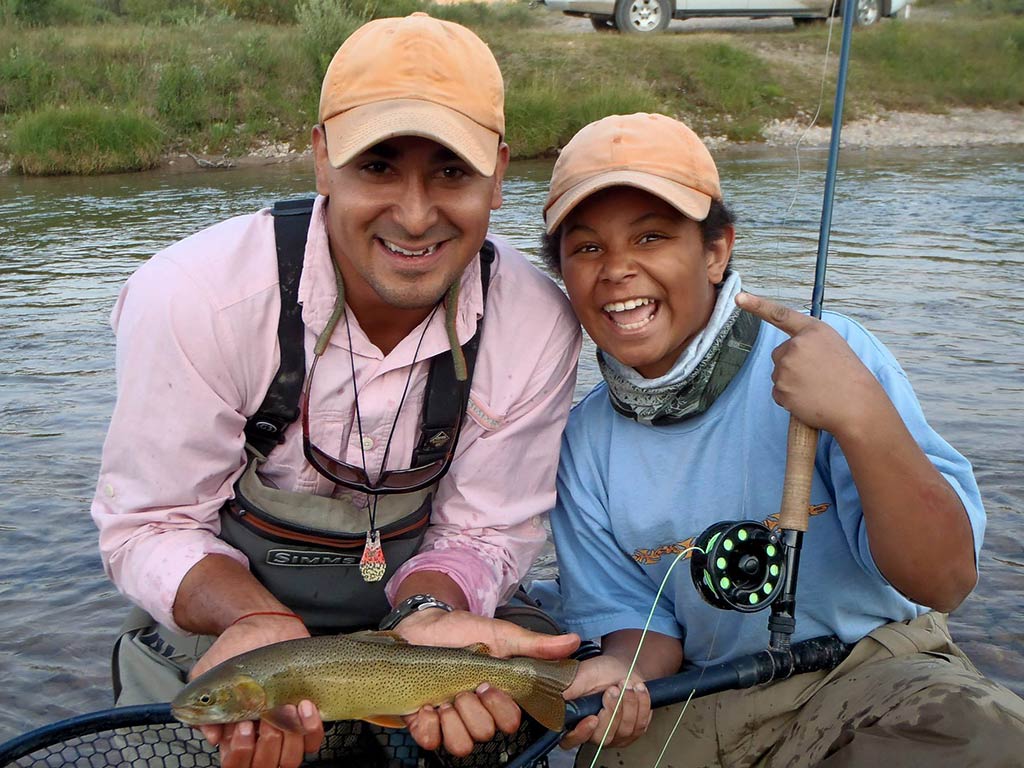
Wyoming’s streams and lakes are waiting to be explored. All it takes is a plan, a map, and the willingness to stop into the local fly shops and cafes and listen to what the locals say. Western friendliness still exists – you can learn a lot from these cowboys. Come and visit the Cowboy State to find out!
Have you ever been fishing in Wyoming? Maybe you’re a local who has some tips? Reach out to us in the comments below with any comments or questions about what you think a Wyoming fishing experience looks like!


